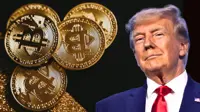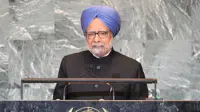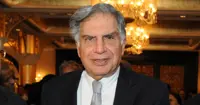Tesla enters Saudi Arabia: A cautious debut amid high ambitions and lingering challenges
10 Apr 2025

Tesla has officially launched sales in Saudi Arabia, marking its long-awaited entry into a country with bold electric vehicle ambitions—but daunting logistical and political hurdles.
The move comes as EV adoption remains modest in the kingdom. Fewer than 2,000 electric vehicles were sold in Saudi Arabia last year, a figure Tesla can match globally in just a few hours. On the country’s main 900-kilometer east-west corridor between Riyadh and Mecca, not a single EV charging station exists—an illustration of just how underdeveloped the infrastructure remains.
That hasn’t stopped Saudi Arabia from setting ambitious goals. The kingdom plans to invest more than $39 billion in EV development as part of its Vision 2030 diversification strategy. But until now, Tesla has been largely absent from the conversation—partly due to a very public feud between CEO Elon Musk and the head of Saudi Arabia’s sovereign wealth fund, Yasir al-Rumayyan.
The rift dates back to 2018, when Musk tweeted he had “funding secured” to take Tesla private after talks with the Public Investment Fund. The deal never materialized, and lawsuits followed, exposing tense communications between Musk and Saudi officials. In the meantime, Saudi Arabia has moved ahead with other players like China’s BYD, which opened its Riyadh showroom nearly a year before Tesla’s arrival.
Now, the political climate appears to be shifting. Musk’s alignment with U.S. presidential frontrunner Donald Trump, and Trump’s upcoming visit to Saudi Arabia, have opened a potential path for renewed business ties. Industry watchers say Tesla’s debut may be timed to coincide with that diplomatic momentum.
“Plenty of business people are thinking about how to position their firms around President Trump’s anticipated visit to the Gulf,” said Robert Mogielnicki of the Arab Gulf States Institute. “I suspect Tesla wants to firmly plant their flag in the Saudi market before then.”
But it won’t be easy.
Tesla enters at a time of headwinds. Its global Q1 sales dropped 13%—the worst showing in nearly three years—due to heightened competition, political backlash, and product delays. In Saudi Arabia, it now faces unique operational challenges: extreme heat, a sparse charging network, and a consumer base that drives long distances regularly.
As of 2024, Saudi Arabia has just 101 EV charging stations—far behind the UAE’s 261, despite having three times the population. Summer temperatures regularly exceed 50°C (122°F), putting added strain on EV batteries. These factors have made Saudi drivers cautious.
“I drive more than 50,000 kilometers a year,” said Fahd Abdulrahman, a local shopper at BYD’s Riyadh showroom. “I’m afraid an EV won’t work for me.”
That concern is echoed by BYD’s local head, Carlos Montenegro, who notes that about 70% of their sales in the kingdom are hybrids, not pure electrics.
Still, Saudi Arabia has big plans. It aims for EVs to make up 30% of vehicle sales by 2030. A new state-backed company, the Electric Vehicle Infrastructure Company, is tasked with expanding the charger network to 5,000 units over the next five years—a fiftyfold increase.
Analysts remain cautiously optimistic.
“Saudi EV adoption will likely remain below leaders like China,” said Morningstar strategist Seth Goldstein, “but demand could rise as fast chargers expand and more affordable, long-range models become available.”
Tesla’s Saudi entry is a strategic, if overdue, move into a high-stakes market with huge potential—and no shortage of hurdles. Success will depend on how quickly infrastructure improves, how political winds shift, and whether the brand can win over drivers with practical needs in a uniquely harsh environment.
FAQs: Tesla’s Launch in Saudi Arabia
1. Why is Tesla only now entering the Saudi market?
Tesla’s entry was delayed partly due to a public dispute between CEO Elon Musk and Saudi Arabia’s Public Investment Fund (PIF) following Musk’s 2018 “funding secured” tweet. That strained relationship sidelined Tesla from major EV investment opportunities tied to the kingdom’s Vision 2030 initiative.
2. What’s the current state of EV adoption in Saudi Arabia?
EV adoption remains low. Fewer than 2,000 EVs were sold in the kingdom in 2024—minimal compared to other markets. However, Saudi Arabia aims to increase EVs to 30% of all vehicle sales by 2030 as part of its climate and economic diversification goals.
3. What challenges does Tesla face in the Saudi market?
Key hurdles include:
- Limited infrastructure: Only 101 EV charging stations across the country.
- Extreme climate: Summer temperatures above 50°C can reduce battery performance.
- Consumer behavior: Long-distance driving is common, making range anxiety a major concern.
4. How does this move tie into broader geopolitical or economic dynamics?
Musk’s warming ties with Riyadh—partly through alignment with U.S. presidential candidate Donald Trump—may be helping reset his relationship with Saudi leadership. Tesla’s debut could signal a renewed effort to tap into the kingdom’s multi-billion-dollar EV push.
5. How does Tesla’s timing compare with competitors?
Tesla is playing catch-up. BYD, the Chinese EV giant, opened its showroom in Riyadh in May 2024 and has already gained traction by offering hybrid models more suited to current infrastructure limitations.
6. What’s Saudi Arabia doing to support EV growth?
The government has created the Electric Vehicle Infrastructure Company, tasked with installing 5,000 charging stations by 2030. That’s a significant scale-up meant to support wider EV adoption.
7. Could this help Tesla recover from recent global sales slumps?
Possibly. Tesla’s Q1 sales fell 13% globally—it’s worst showing in years. Expanding into new and growing markets like Saudi Arabia could help offset stagnant growth in mature markets, assuming infrastructure keeps pace.
8. What are the investment implications for the auto and energy sectors?
Tesla’s entry signals growing interest in the Gulf’s EV ecosystem. It could open up opportunities for suppliers, infrastructure developers, and tech firms aligned with the EV value chain—especially as the region diversifies away from oil.







.webp)














